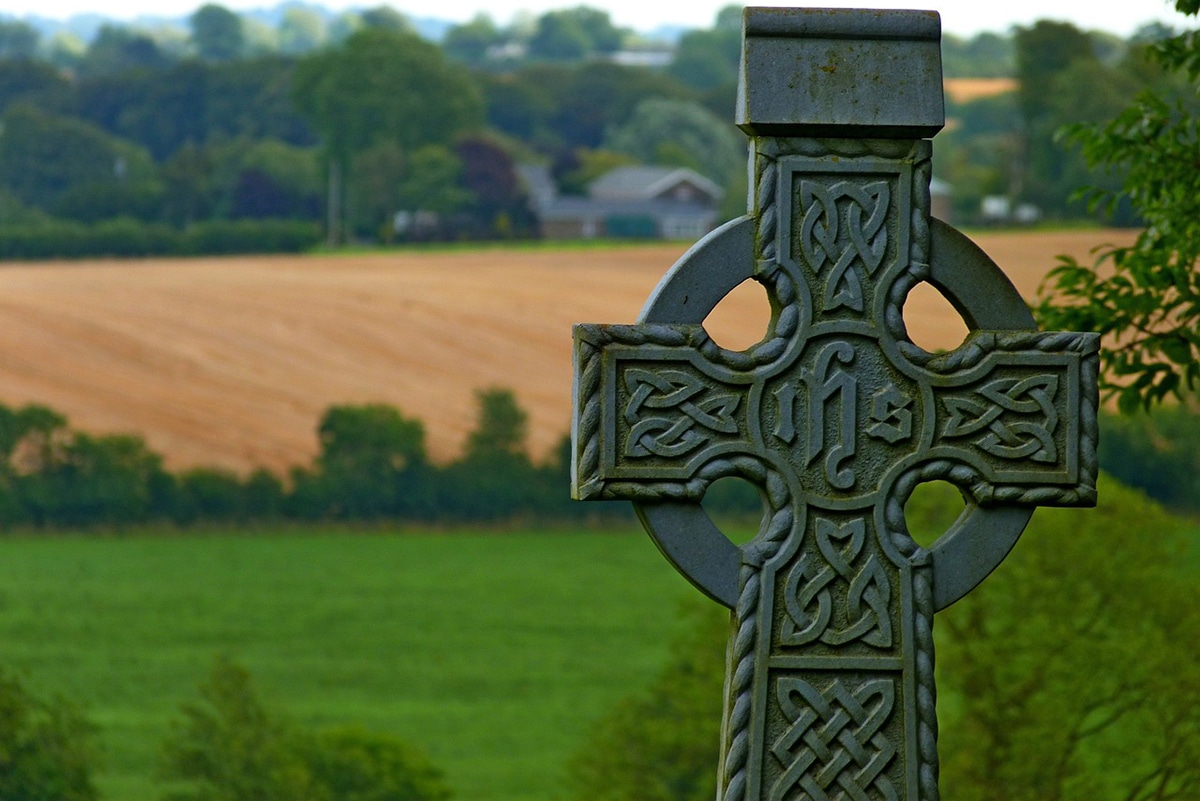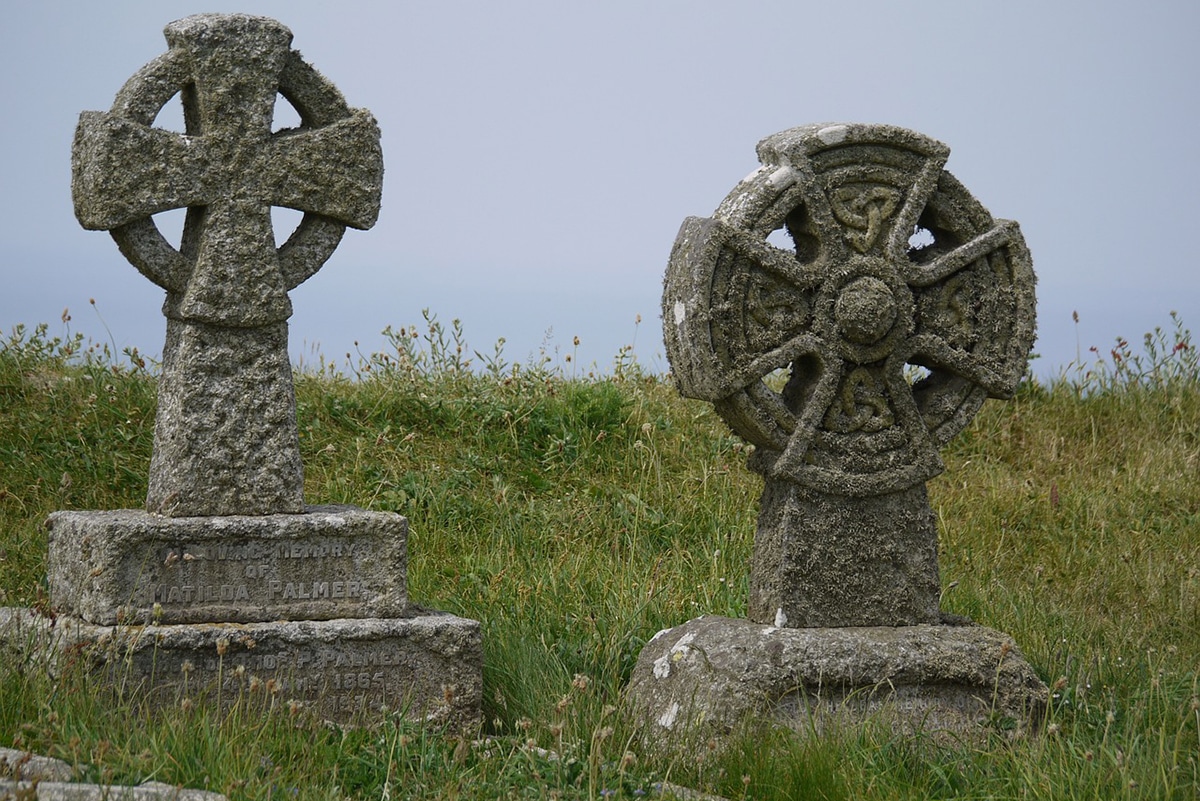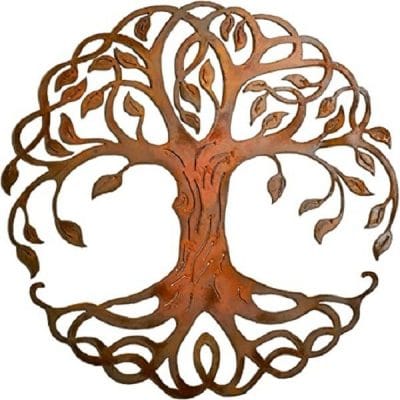
Also known as the Irish high cross, the Celtic cross is one of the best-known pagan symbols in the world. There are many people who know what it is like but who do not know its origin or even what it represents. We can find this symbol in bracelets, pendants, earrings, rings, fabrics, tattoos, etc. But still, Many are unaware of the meaning of the Celtic cross.
To get you out of doubt, we are going to explain in this article What is this symbol and what does it represent? These beautiful and large monuments, which can be up to seven meters high, grace the verdant landscapes of Ireland. So if you are interested in the subject, I recommend that you continue reading.
What is the Celtic cross?

Before talking about the meaning of the Celtic cross, we will first explain what this symbol is and what it was used for. It is one of the most revered Irish symbols in that country. Few are the most famous symbols associated with the incarnation of Christianity in Ireland. The Celtic cross is basically a cross with a circle or halo running through it. This circle or halo supposedly represents light. Additionally, Celtic crosses are often decorated with Celtic knotwork or traditional Gaelic symbols.
Another name by which this symbol is known is the Irish cross. Today it is a very famous Christian symbol that comes from paganism. During the Middle Ages, the cross with a circle of light arose in Great Britain and France. Many claim that it is a symbol from before the appearance of Christianity, that already existed when the first petroglyphs appeared. Later, between the XNUMXth and XNUMXth centuries, this type of cross was adopted by Irish missionaries.
Why such large stone monuments began to be erected remains a mystery to this day. What is an irrefutable fact is that Celtic crosses are often located near important monasteries. Therefore, experts speculate that they may have been used in their day to define spatial zones of the monasteries or to define their limits. They could also have been used to pray, preach, do penance, or teach the Scriptures. As for the more elaborately carved Celtic crosses, these probably reflected the authority and wealth of the monastery in question. Obviously, they were also used to commemorate important and prominent people.
Legend
As expected, there are legends and myths related to the appearance and meaning of the Celtic cross. According to Irish folklore, it was Saint Patrick who introduced this symbol when he was trying to educate and surely convert the Irish who followed the pagan faith. It should be noted that the Celts worshiped a deity called Lugh, Lug or Luga, who was one of their main gods, especially in Ireland. This represented light and the sun. According to legend, Saint Patrick had the idea of combining the Christian cross with a circle representing the sun. In this way he gave the cross its own identity, associating it with a halo of light and the Christian symbol.
There is another myth, although less popular. This suggests that by placing the cross over the symbol of the solo Christ was shown to be more powerful than the deity worshiped by pagans.
What does the Celtic cross mean?

Now that we know what this ancient symbol is, let's see what the meaning of the Celtic cross is. It has basically become a very traditional Christian symbol all over the world, used for religious purposes by the faithful living in Ireland. It is a symbol of both faith and Irish pride. To this day, many people use the Celtic cross throughout the world, its meaning being the admiration for the Christian faith and for the Irish culture.
It can be said that the oldest stone Celtic crosses still standing today in Ireland were created between the XNUMXth and XNUMXth centuries. On many occasions, these monuments are carved with very intricate shapes and images. The earliest Celtic crosses show representations of knots, while the later ones include various biblical inscriptions and story images.
Distinctive features
Within the Irish landscape, these Celtic stone crosses are truly imposing and impressive. The first ones that were made measure around three meters in height and those that came later exceed them considerably. However, this variation is not the only distinguishing feature. In the four points of the ancient Celtic crosses there are various representations of pagan festivals:
- Imbolc: It is celebrated in February. It is associated with the fertility of the earth and is prayed for successfully completing new projects.
- Beltane: It takes place in May. It is the representation of the virility of the gods and the fertility of cattle was requested.
- Lughnasadh: It is celebrated in August. It is related to the harvest time and the harvest and the flocks are blessed.
- Samhain: Party of the month of November. It is the last pagan festival and the last harvest of the year. Therefore, it represents the end of the cycle of the Celtic wheel.

Apart from representing pagan festivities, the tips of ancient Celtic crosses are also associated to the cardinal points related to the pagan deitiess:
- Lugh: To the East. He is bound to light and is a protective warrior
- Nuada: To the south. He is linked to fire and is the defender of emotions.
- Dagda: To West. It is linked to water and is the controller of thought and mind.
- Lia Fail: To the north. It is tied to the earth. There, only legitimate kings are approved by the druid deities and crowned.
As you can see, the meaning of the Celtic cross has a connotation closely related to religion, which over time even became a symbol of the Christian faith, leaving pagan representations aside, of course.